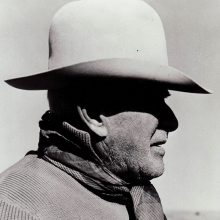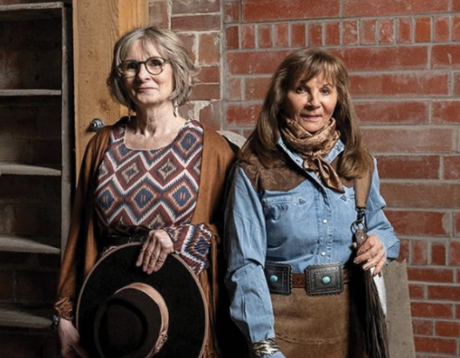
When Roderick Macleay left his home in Danville, Que., for the western hills, he thought he was not long for this world. On recovering from rheumatic fever, his doctors had predicted he might live another fifteen years if he moved to a higher altitude.
And so it was that in 1898 he came to the Highwood district to visit two old family friends, Dave Thorburn of Davisburg and George Emerson of Pekisko. Inspired by these pioneers and by the future he saw for the west, Rod decided to become a rancher and crowd a lifetime of achievement into whatever few years were allotted him. He worked hard, rode hard and was often accused of being hard-headed.
His brother Alex, cousin Douglas Riddle and friend Marvin Morriel joined him in 1900. Together Riddle & Macleay Bros. Ranch Co. homesteaded and built up a herd of cattle that ranged from the foothills to the Red Deer River, north of Brooks. When the winter of 1906-07 discouraged his partners, Rod persuaded George Emerson to buy out their interests. For a number of years, Emerson and Macleay imported Manitoba steers to grow and fatten on Alberta grass, a profitable practice as long as there was open range. When the country became settled and fenced, Rod bought out homesteaders and neighbouring ranches to provide grass for the herd he would not scale down in numbers. When partner Emerson objected, Rod bought him out.
At the age of 35, when his fifteen years were up, he was closing a deal with Riley and Thompson for the TL Ranch on Willow Creek.

In 1919, he acquired the Bar S Ranch from Pat Burns, along with the Circle cattle running on the Red Deer range. It was over the wording in the contract for the Circle cattle, that Burns and Macleay went to court. R.B. Bennett, council for Macleay, lost the decision in Alberta courts, so made arrangements to take the case to the Privy Council. A month before the London hearing, Burns called the suit off and the disagreement was settled out of court. No hard feelings remained with either cattleman, for in 1924 Macleay borrowed money from Burns to buy the White Mud 76 Ranch from Gordon, Ironsides and Fares. This ranch was sold to Burns five years later.
Rod’s energy and tenacity kept him in and out of deals, and in debt, for fifty years. He dearly loved a good argument. He felt it wise to keep in practice, for his well-known verbal barrages often brought results when other assets were at a low ebb. Well posted on economic and world affairs, he could hold his own with bank presidents, politicians, camp cooks and Indians. He claimed the latter two were the more difficult to convince.

He was married in 1905 to Laura Sturtevant of Newport, Vermont. Mrs. Macleay became as devoted to the hills as her husband, and provided gaiety and hospitality to all associated with, or who drifted through the Rocking P. The Stoney Indians held both the Macleay’s in high esteem for their unfailing help and encouragement in their struggle for better living conditions. In 1945, Rod was made blood brother, “Ma-pi-a-tow,” in recognition of his generous help to the tribe.
Mrs. Macleay died in 1952; Mr. Macleay in 1953.
Laura and Rod Macleay are buried in the Highwood Cemetery in High River, Alta.
Roderick Riddle Macleay, written by his daughters, Dorothy Blades and Maxine Chattaway, was excerpted from Leaves of the Medicine Tree, a history of the area and biographies of pioneers and old timers who arrived prior to 1900; published in 1960 by the High River and District Old Timers and Pioneers Association.















